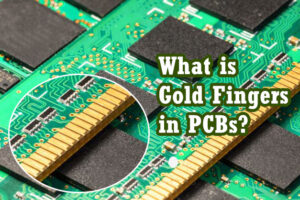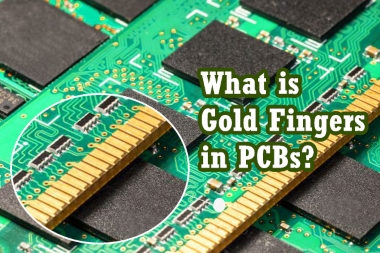
In many of today’s devices, the transmission of signals must be carried out between two or more circuit boards. Using a gold finger, a computer’s motherboard can quickly read the program of a circuit board. So, what exactly are Gold Fingers? How do they work inside computer technology?
What is a gold finger?
What we often refer to as gold fingers are the gold-plated posts seen on the edges of printed circuit boards, which are shaped like fingers. It makes contact with anywhere from a few to hundreds of contacts all over again.
The main purpose of a gold finger is to assist the PCB to connect to the motherboard of a computer and communicate with various other devices through digital signals, such as consumer smartphones, computer peripherals, watches, etc. Due to its excellent electrical conductivity, this alloy is used as a connection to the PCB.
There are two processes for PCB gold fingers
– Electroless Nickel Immersion Gold (ENIG): Easier to solder and more cost effective than electroplated gold. However, it is thinner, softer (usually 2-5u) and not suitable for board insertion and removal.
– Electroplated hard gold: this gold is solid, hard and thick (usually 30u), more suitable for PCB continuous use of the abrasive effect.
How to use gold fingers?
The use of gold fingers is extensive. In addition to electrical conductivity, gold is also used to protect the connection edges from wear and tear during use. For any given computer device, you can see many peripheral connections to the computer itself through the PCB gold fingers. common uses for PCB gold fingers are:
– Interconnection points
Auxiliary PCB through the slot (such as PCI, ISA, AGP) connected to the motherboard, gold fingers in the PCB and the computer to play a role in the transmission of signals to and from the role.
– Adapters
Gold fingers can provide many enhancements to a personal computer, such as sound cards, by inserting the auxiliary PCB vertically into the motherboard, it allows the computer to provide enhanced graphics and high-fidelity sound.
– External connections
The computer’s peripherals are connected to the motherboard through the PCB gold fingers.
Gold fingers provide the modular PCB with the ability to operate and provide modern functionality for users of remote and stationary computing devices. In addition to personal computers, PCB gold fingers are also used as connection points in computerized industrial machinery.
What are the specifications of gold fingers?
In the process of plating PCB gold fingers, the corresponding rules must be observed in order to make it work properly.
– Plating through-hole should not be close to the gold finger
– Gold fingers should be kept at a certain distance from the solder resist or silkscreen, not to touch
– Gold fingers must face the opposite direction of the middle of the PCB
PCB gold finger advantages and standards
Due to its electrical conductivity and wear resistance, gold is considered to be the most suitable metal for connection contact, but the cost is also more expensive. Gold itself is relatively soft, in order to be more strength, gold used in printed circuit boards is usually combined with nickel or cobalt to form an alloy for use.
For plating processes, nickel thickness is typically between 150 and 200 micro inches.
The standard for the production of PCB gold fingers was established in 2002 by the Institute of Electronic Connectivity (IPC). Currently IPC A-600 and IPC-6010 are the most widely used standards.
– Chemical composition
In order to obtain the maximum rigidity of PCB contacts, the gold plating layer should contain 5%-10% cobalt.
– Thickness
The gold finger plating thickness should always be in the range of 2 to 50 micro inches. The standard thicknesses for delineation are 0.031 inch, 0.062 inch, 0.093 inch and 0.125 inch.
– Visual inspection
To test gold fingers through a magnifying glass.
– Tape test
To test the adhesion of the gold plating to the contact, a piece of tape is placed along the edge of the contact, and when the tape is removed, if there is visible gold plating on the tape, the plating lacks sufficient adhesion to the contact.
How does gold fingers change the world?
With more and more technologies relying on gold fingers, gold fingers have made the electronics industry more productive and capable than ever before.
To learn more about how KingPCB produces assembled gold finger PCBs, contact us today for more information and a quote!




